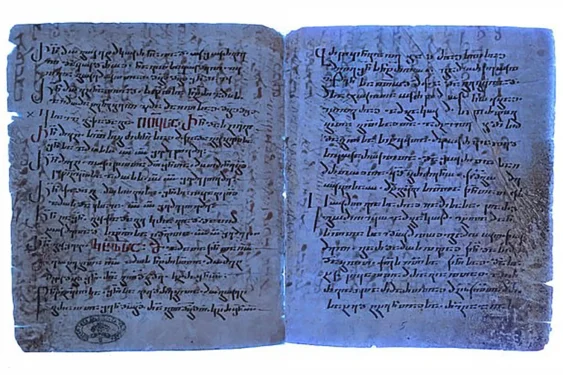
Reading between the lines of a couple of biblical passages, a researcher has rediscovered a hidden chapter within the text, according to a report from last month’s New Testament Studies.
The findings stem from the research of Grigory Kessel, a medievalist from the Austrian Academy of Sciences, who believes the hidden texts may date back 1,750 years.
The original text was believed to be curated during the 3rd century, but then later copied in the 6th century.
“The tradition of Syriac Christianity knows several translations of the Old and New Testaments,” Kessel said in a statement. “Until recently, only two manuscripts were known to contain the Old Syriac translation of the gospels.”
Kessel was able to rediscover the hidden text, which could be found in Matthew chapters 11 and 12, with ultraviolet photography. The hidden words were found under three layers of text in a manuscript.
While the Greek text in Matthew chapter 12 verse 1 reads: “At that time Jesus went through the grainfields on the Sabbath; and his disciples became hungry and began to pick the heads of grain and eat,” it’s newly discovered Syriac translation reads: “[…] began to pick the heads of grain, rub them in their hands and eat them,” according to a note on Phys.org.
The text was likely erased from the parchment and written over with new texts because of its scarcity, according to the New York Post, who reported the discovery made by Kessel.
Kessel’s newest finding received praise from Claudia Rapp, the director of the Institute for Medieval Research at the Austrian Academy of Sciences.
“Grigory Kessel has made a great discovery thanks to his profound knowledge of old Syriac texts and script characteristics,” Rapp said in a statement. “This discovery proves how productive and important the interplay between modern digital technologies and basic research can be when dealing with medieval manuscripts.”
But Kessel’s discovery isn’t exactly new. Researchers have pointed out that scholars made the discovery as far back as 1953. It was again discovered in 2010, just 10 years before it was digitized in the Vatican Library, which included the use of both natural light and UV images.
In fact, Kessel’s recent discovery is referred to as the “fourth textual witness,” according to the Post.
A recent finding of similar hidden texts came from manuscripts in St. Catherine’s Library by the Sinai Palimpsests Project, which used imaging to recover the hidden texts.
Of the two manuscripts known to contain the Old Syriac translation of the gospels, one is kept in the British Library in London, while the other is kept in St. Catherine’s Monastery at Mount Sinai, which is the world’s oldest continually operating monastery.
